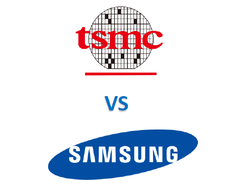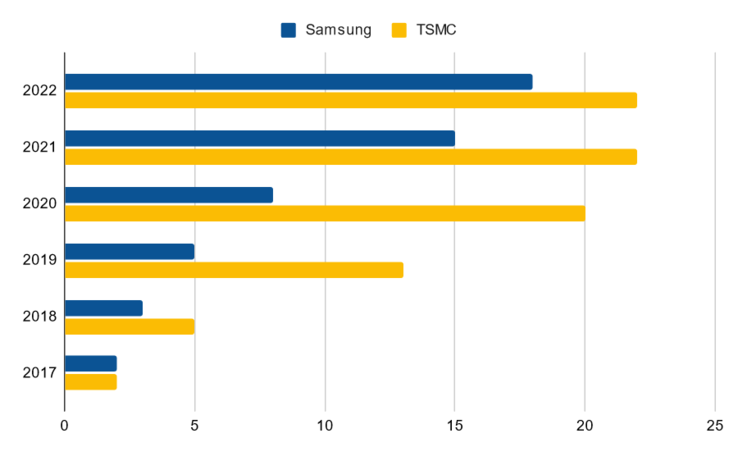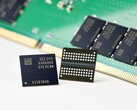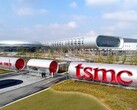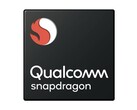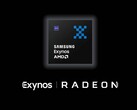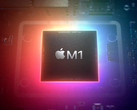The competition between Samsung and TSMC is about to heat up even more this year. While the Taiwanese foundries will still stick to highly refined FinFET transistors, the South Korean giant is boldly switching to GAAFET technology for the 3 nm nodes. Despite entering only the sixth year as a fully independent business unit, the Samsung foundries are not too far behind TSMC, at least as far as the list of served customers goes. It is true that many analysts still see Samsung’s yields on the lower side compared to the Taiwanese competitor, but the South Korean company is continuously investing and improving the production lines with a clear plan to overtake TSMC by 2030.
As noted by DigiTimes, Samsung’s foundry business started out as an independent entity in 2017 with around 30 customers and managed to grow this number to more than 100 in the meantime (TSMC has 500 customers). Industry insiders claim that this customer portfolio could increase to over 300 by 2026. Active investments are conducted to increase production capacity, which is currently distributed over five facilities located in Gyeonggi Province, South Korea and Austin, Texas. Two more facilities are expected to go online soon: one in Pyeongtaek and one in Taylor, Texas.
Samsung is not ignoring the chip shortages that are still expected to affect most industries this year, but it is confident that production capacity could be doubled by 2026. Some of Samsung’s latest orders include 5 nm chips for the HPC market, 4 nm chips for Qualcomm’s Snapdragon 8 Gen 1 SOCs and AMD’s Chromebook CPUs, and 3 nm chips for Qualcomm’s next gen SoCs and AMD’s upcoming CPU / GPUs.
With the Intel struggles from the past few years, Samsung managed to consolidate its position and the South Korean foundries succeeded in surpassing Team Blue as far as revenues are concerned for 2021. Industry insiders are suggesting that 2022 should bring even bigger revenues of around $21-23 billion (up 20% YoY), and 6-year projections show an almost three-fold increase to $50-55 billion.
EUV machine capacity gap is still significant between the the two foundries, but Samsung aims to reduce it this year by acquiring additional machines to match at least 60% of TSMC’s capacity. Samsung is already investing 70% of the yearly revenue in production capacity, while TSMC is investing only 50%, so the gap will be closing gradually over the next few years.
For now, the automotive and AI chip fields remain the only fields that are not fully covered by the South Korean foundries. Additionally, the System LSI business that is responsible for semiconductor design and development has been stagnant in the last few years, and Samsung needs to find solutions for increased growth.


 Deutsch
Deutsch English
English Español
Español Français
Français Italiano
Italiano Nederlands
Nederlands Polski
Polski Português
Português Русский
Русский Türkçe
Türkçe Svenska
Svenska Chinese
Chinese Magyar
Magyar